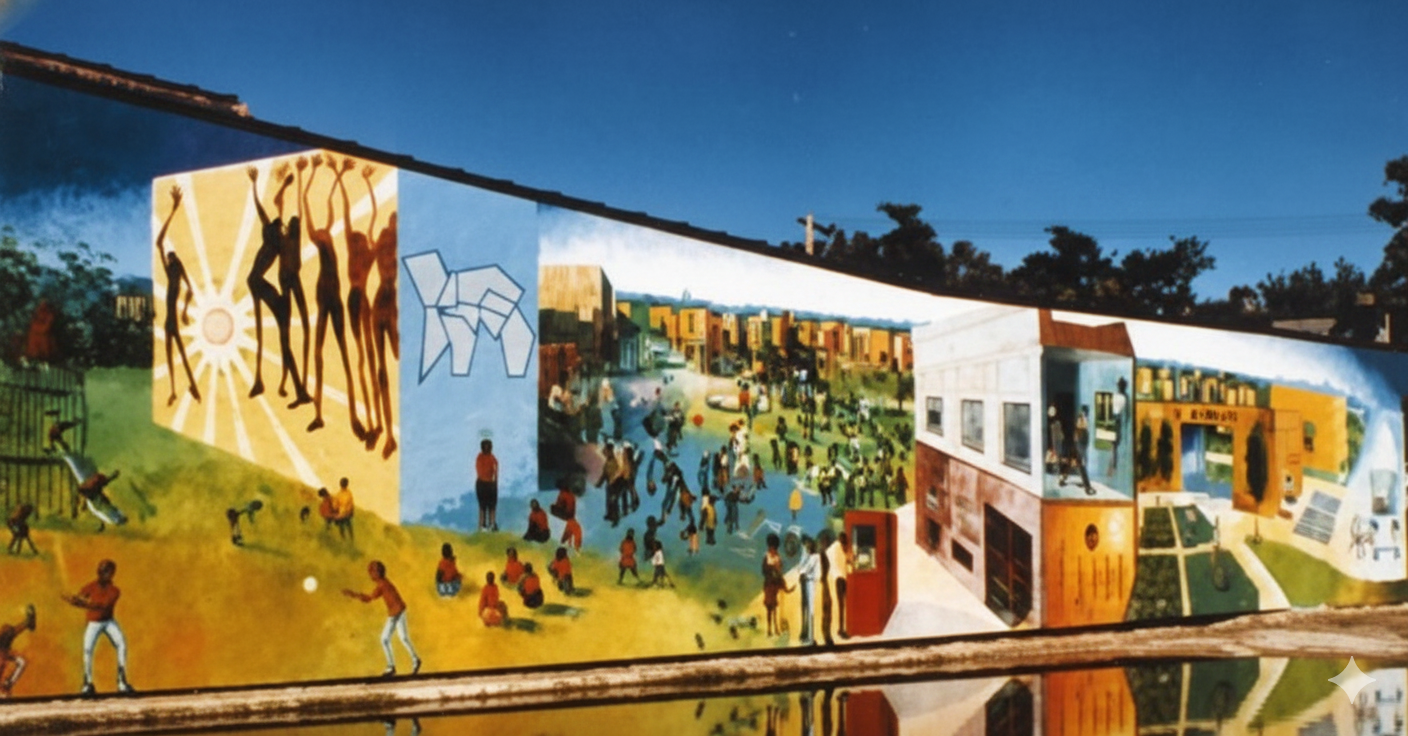
BAND OF 24 CONSULT DOCUMENTS

HIGHLIGHT
5th City and the Band of 24: Community Revival Through Self-Direction
AI NotebookLM 8 minute audio summary about launching Human Development Projects.
AI Summary: Describing Fifth City, a community initiative on Chicago’s West Side, originally named for its northern boundary but later symbolizing any self-reliant community. Facing significant urban challenges in 1963, including high crime, unemployment, and neglected infrastructure, Fifth City underwent a remarkable transformation. By 1980, it boasted a thriving local shopping center, secured substantial private and public investments, and saw improved housing services with increased rent collection. The community also developed strong male leadership through organizations like the Men’s Club and Safe Streets Patrol, ultimately becoming a globally recognized model for self-help in 24 countries and a destination for visitors seeking to learn its successful methods.
Sources: “Social Demonstration Towards Mass Replication”, Joseph Mathews, April 1976
ICA Global Human Development Strategies
AI NotebookLM 10 minute audio summary about community principles and strategies
Source: ICA Global Strategies by Stuart Umpleby and Alisa Oyler, 2007
The ICA is convinced that effective human development happens most effectively at the local community level. Toward this end, its staff live and work with local people in planning and actuating socio-economic projects around the world. The projects, located in both rural and urban communities of extreme need, were established in the 1970s and 80s for the purpose of demonstrating comprehensive human development.
ICA’s first community project was launched in 5th City, a neighborhood of East Garfield Park in Chicago in 1963. The Band of 24 replicated the 5th City model in Human Development Projects (HDPs) in every time zone around the world, celebrated as a World’s Fair in Kwangyung Il, Korea in 1977. Three years later with community replication happening in many nations, there were more than 300 HDPs around the world.
Human Development Projects
Human Development Projects (HDPs) focused on involving people in a local community in building an example of what a “new social vehicle for planet Earth” would look like within a small geographical area. While trade, technology and infrastructure influence social change, the HDPs were aimed at harnessing the “human element” through motivating residents, releasing their creativity and building leadership skills to empower them in the task of comprehensive change.
Human Development begins with local people in local communities. Residents of each Human Development Project worked in cooperation with both the public and private sectors to achieve economic self-dependence. Each project began with a week-long consultation during which residents and volunteer consultants from around the world shared their expertise to build a plan to meet the community’s needs.
First, the consultation elicited from the community a picture of its hopes and dreams for the future. It then determined the major factors blocking this vision and designed practical proposals and specific tactics to ensure the implementation of the plan for comprehensive socio-economic development. Programs unique to each community were created by residents and auxiliary staff.
- Human Development Approach, 1979
- “Around the World” with Social Demonstration, Venod Parekh, July 2, 1975
- Human Development Project Frame (detailed description)
- New Future for Local Man, brochure
